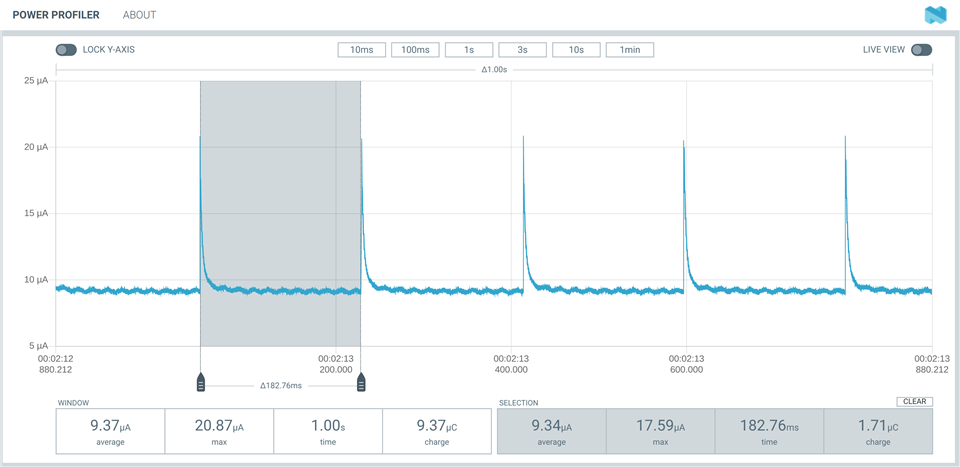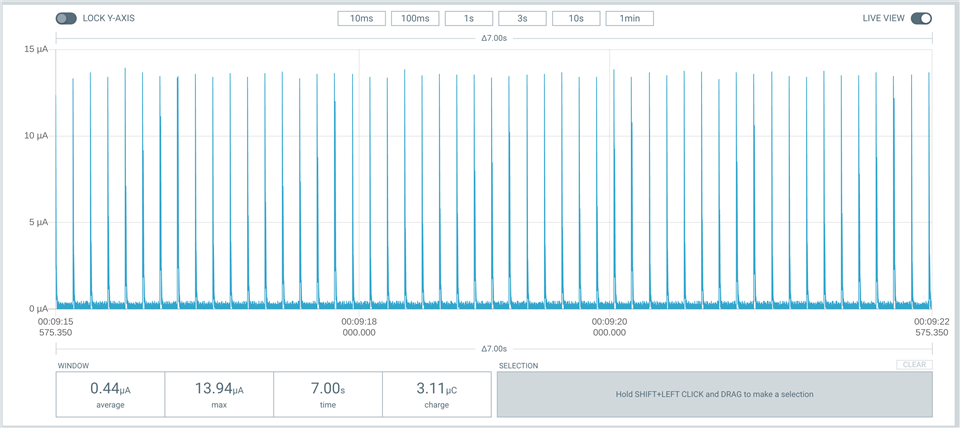I have been struggling to reduce the current on the Nordic Dongle to the sub 3 uA levels that the specs suggest I should be able to achieve.
I am stuck at achieving a 9-10 uA current in POWER off mode.
Here is an output from the PPK-II in power off mode.

To achieve this I set up 4 GPIO pins to wakeup the nrf52840 from POWER_OFF mode as follows:



